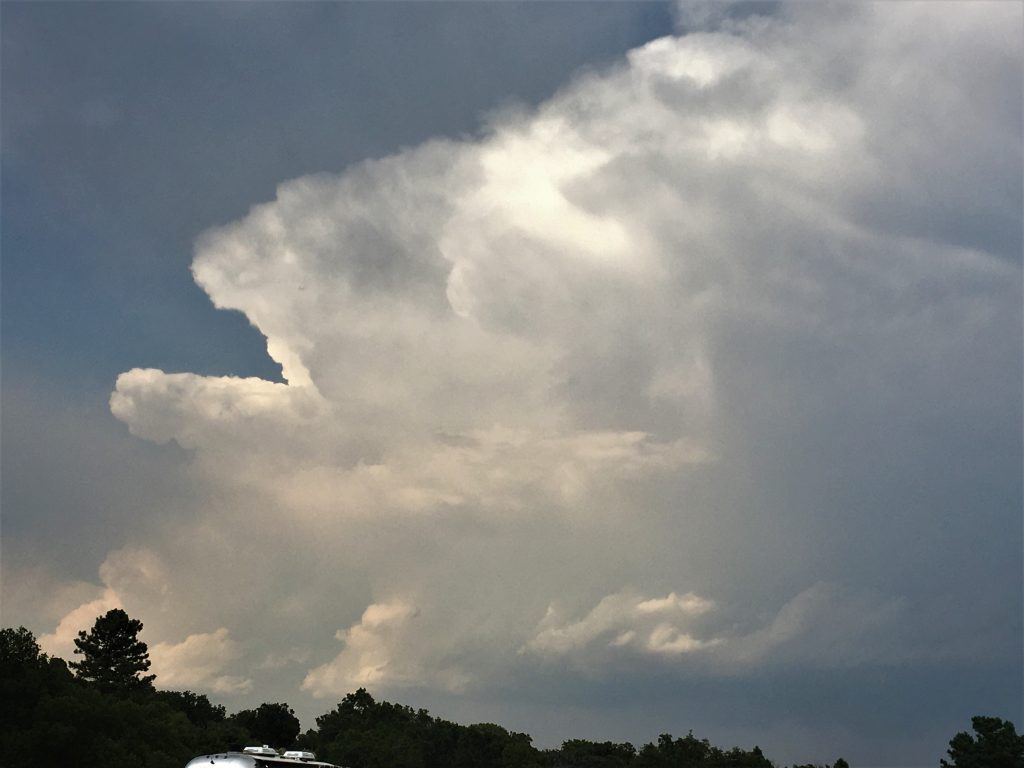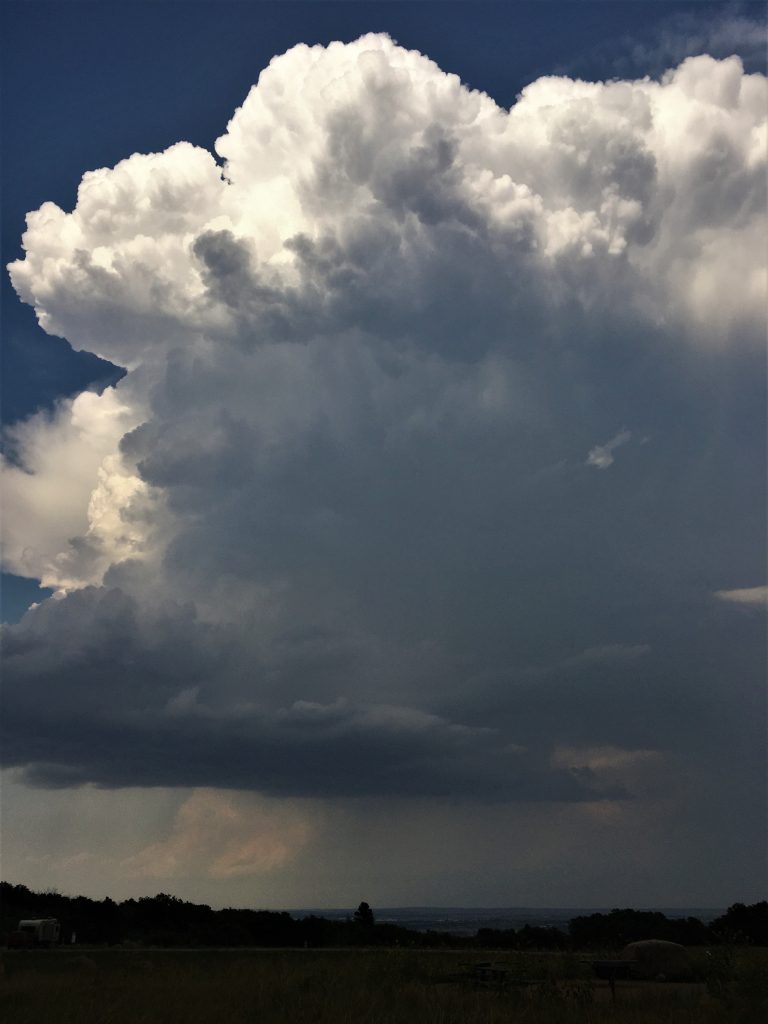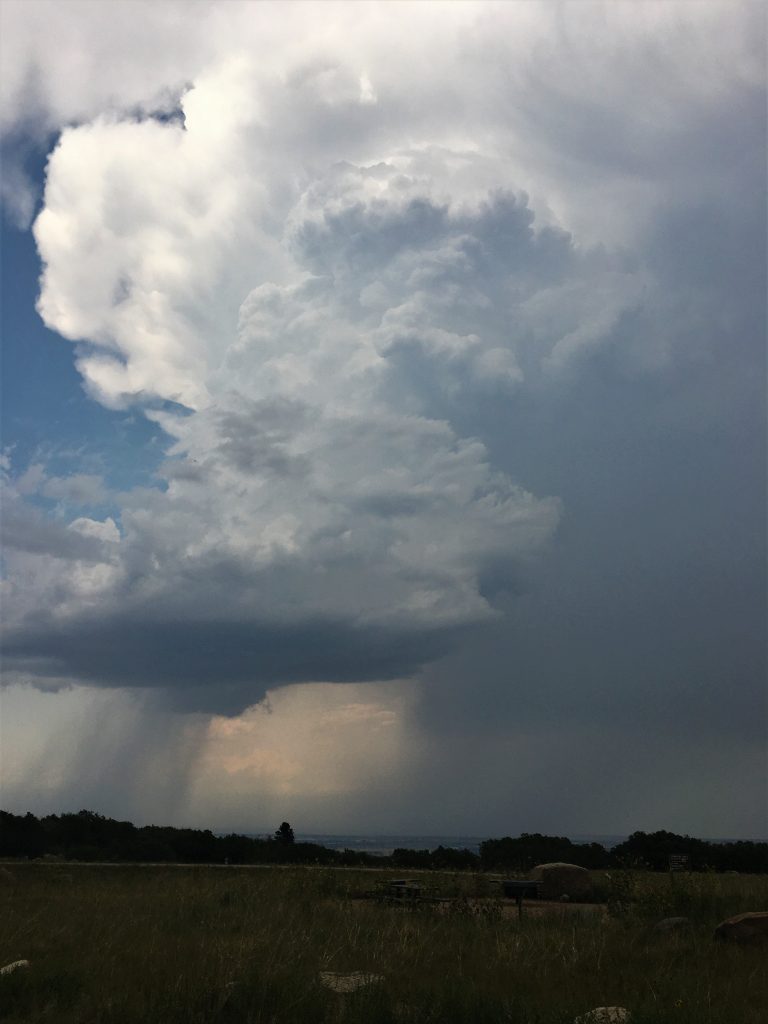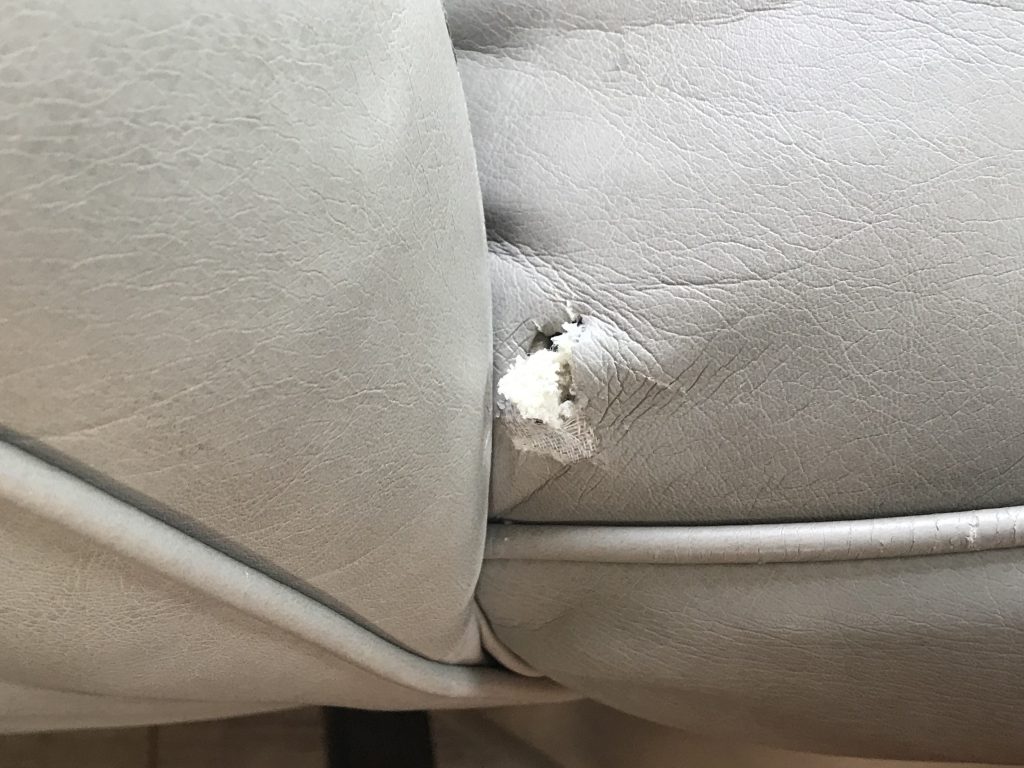Cheyenne Mountain State Park, Colorado Springs, Colorado
When the righteous thrive, the people rejoice; when the wicked rule, the people groan. ~ Proverbs 29:2
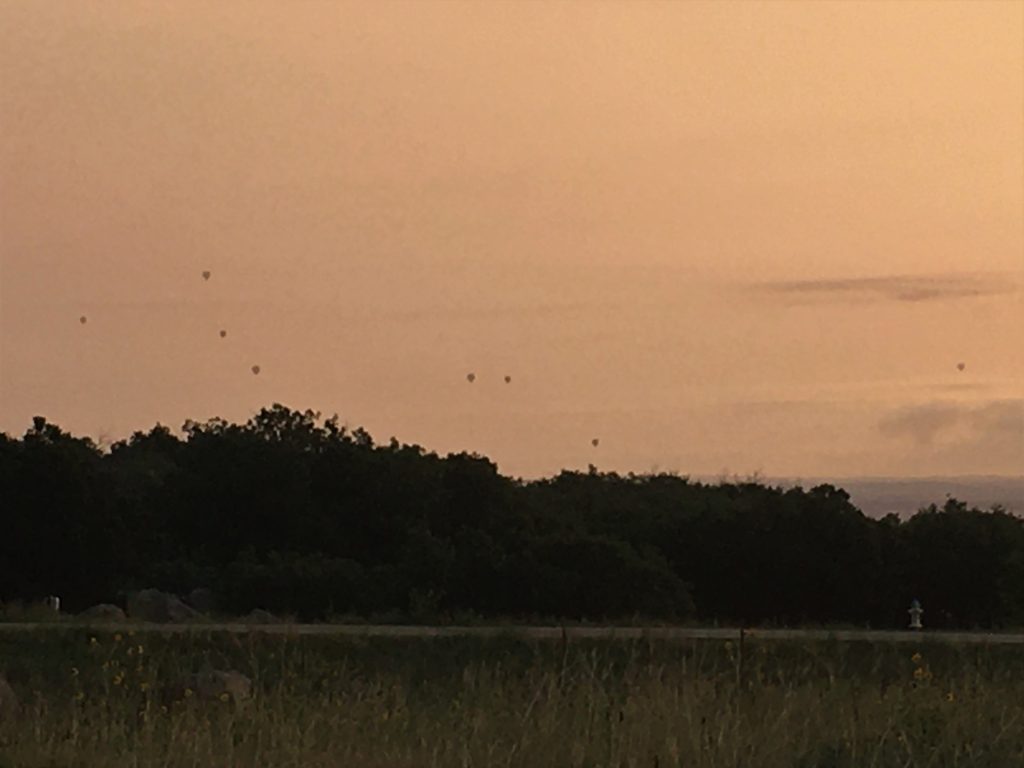
See? I wasn’t making it up! : )

What can we do on a Saturday to get out of the coach and not get sucked into a mass of humanity?
Visit the Army museum across the street!
Fort Carson is literally across the street from the State Park. Traffic light at the end of the road, and straight across to the museum.
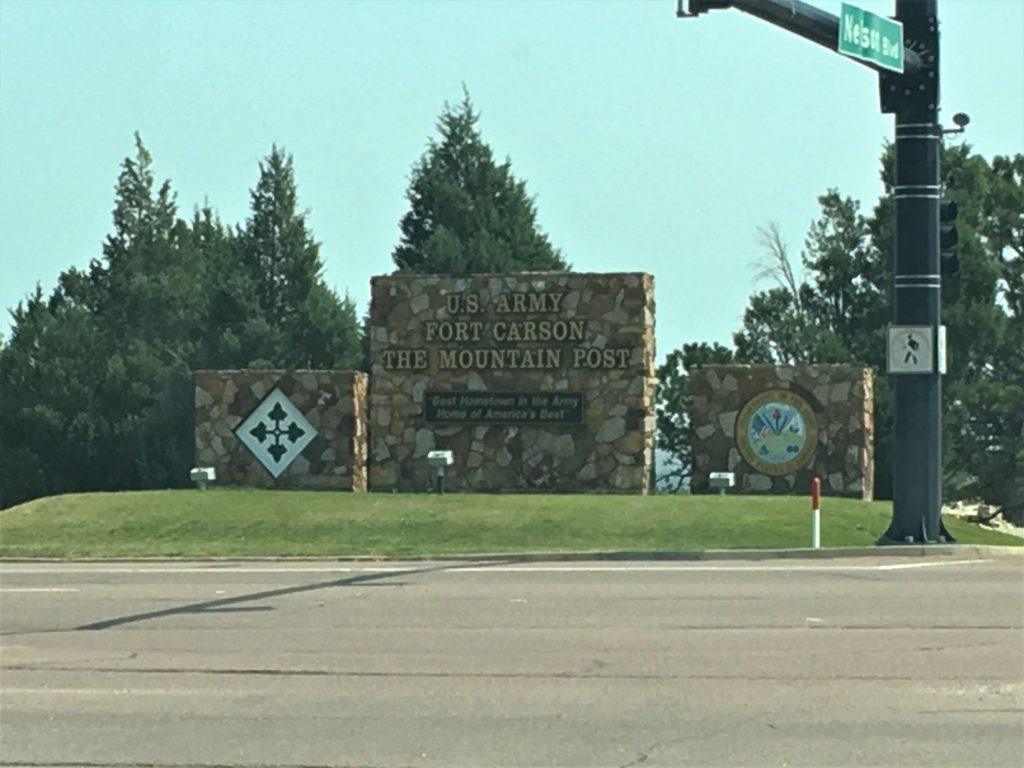
We figured not many people would be there, so it would be a good way to spend a couple of hours and be inside out of the heat, too. And we were right! There were only a few cars in the parking lot when we arrived.
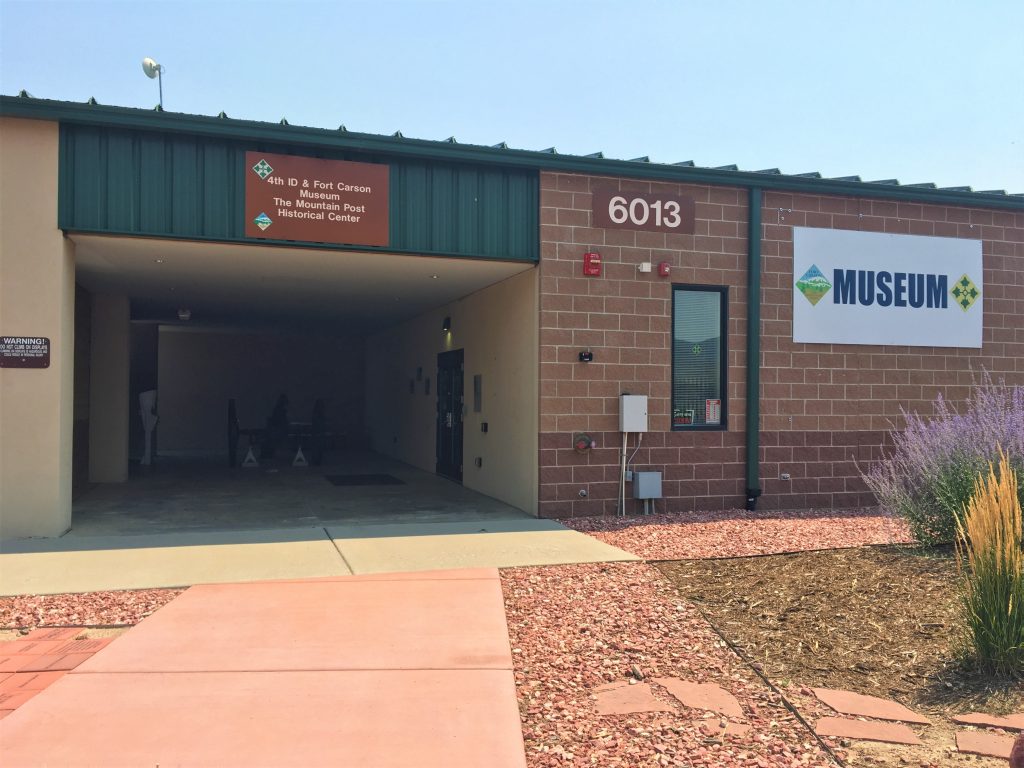
It wasn’t long before we discovered why.
They were closed!
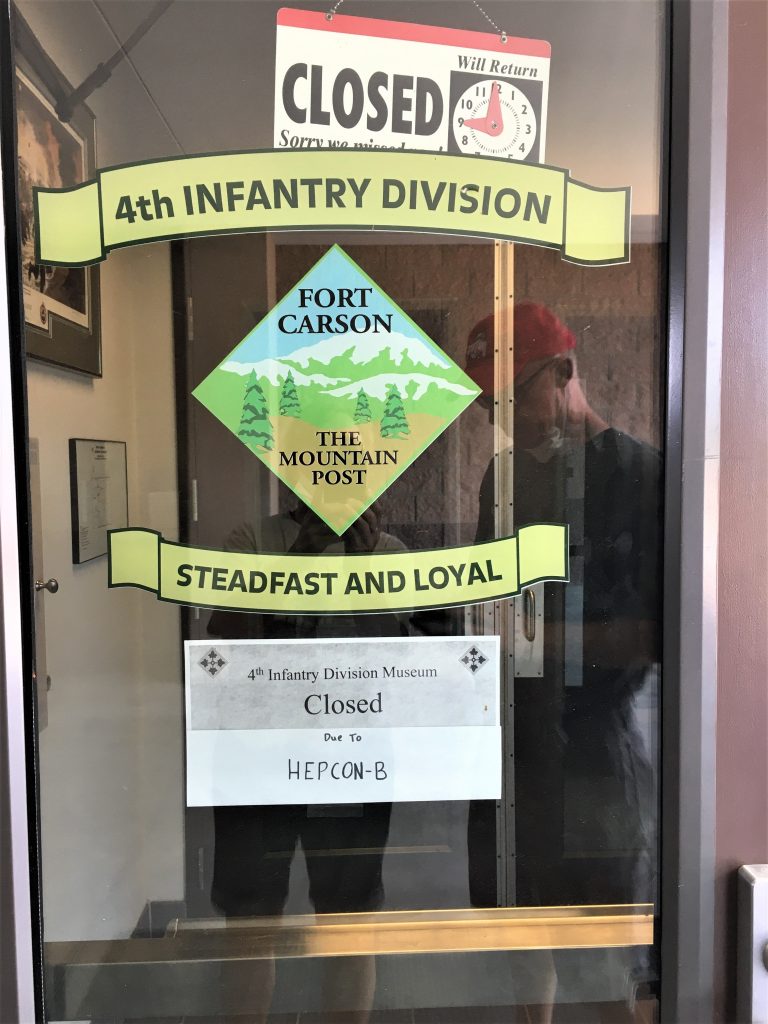
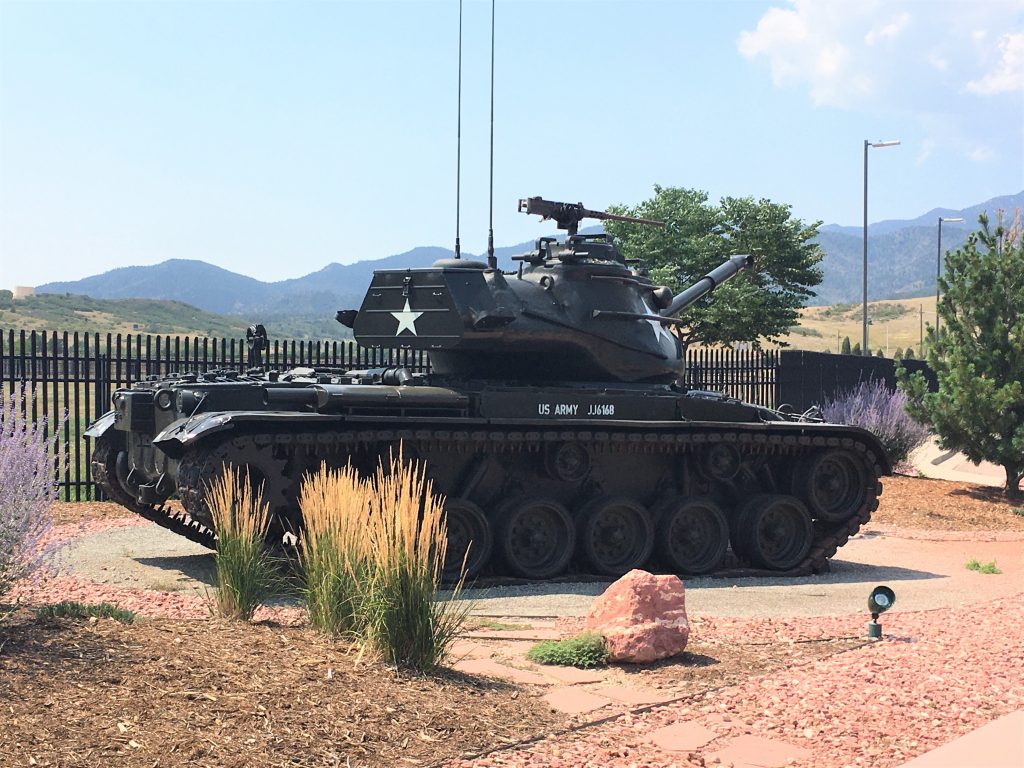
You’d think they’d keep that cleaned off, but maybe it’s a loosing battle. . . : )
It was too hot to do anything else, so we went home and sat around and watched the sky.
Here’s some information I borrowed from carson.army.mil about a place we never visited.
Fort Carson History
Fort Carson was established in 1942, following Japan’s attack on Pearl Harbor. The city of Colorado Springs purchased land south of the city and donated it to the War Department. Construction began immediately and the first building, the camp headquarters, was completed January 31, 1942. Camp Carson was named in honor of the legendary Army scout, Gen. Christopher “Kit” Carson, who explored much of the West in the 1800s.
At the construction’s peak, nearly 11,500 workers were employed on various construction projects at the new camp. Facilities were provided for 35,173 enlisted men, 1,818 officers and 592 nurses. Nearly all of the buildings were of the mobilization type construction with wood sided exteriors. The hospital was of the semi-permanent type concrete block and had space for 1,726 beds with an expansion capability of 2,000 beds. The 89th Infantry Division was the first major unit to be activated at Camp Carson. During World War II, over 100,000 Soldiers trained at Camp Carson. Along with three other infantry divisions – the 71st, 104th and 10th Mountain – more than 125 units were activated at Camp Carson and more than 100 others were transferred to the Mountain Post from other installations.
Nurses, cooks, mule packers, tank battalions, a Greek infantry battalion, and an Italian ordnance company – literally Soldiers of every variety – trained at Camp Carson during the war years. Camp Carson was also home to nearly 9,000 Axis prisoners of war – mostly Italians and Germans. The internment camp at Camp Carson opened on the first day of 1943. These POWs alleviated the manpower shortage in Colorado by doing general farm work, canning tomatoes, cutting corn, and aiding in logging operations on Colorado’s Western Slope.
Between 1942 and 1956, pack mules were a common sight at Camp Carson. The first shipment arrived by train from Nebraska in July 1942. The mules were used by Field Artillery (Pack) battalions to carry equipment, weapons and supplies over mountainous terrain. The most famous of these animals was Hambone, the pride of the 4th Field Artillery for 13 years. He carried first sergeants up Ute Pass to Camp Hale, located near Leadville, Colorado, where the Army conducted cold weather and mountain warfare training. Hambone died in March 1971, and was buried with full military honors.
Activity at Camp Carson was greatly reduced following the end of World War II. By April 1946, the military strength at the Mountain Post had dropped to around 600. It appeared that Camp Carson would be closed. With the onset of the Korean War however, activity once again increased. Many Reserve and National Guard units were called to active duty and stationed at Camp Carson during this time. Camp Carson became “Fort Carson” in 1954. In the 1960s, mechanized units were assigned to the Mountain Post. At this time additional training land was purchased, bringing the post to its current size of 140,000 acres. Throughout its history Fort Carson has been home to nine divisions. An additional training area, comprising 237,000 acres, was purchased in September 1983. Named the Piñon Canyon Maneuver Site, this training area is located approximately 150 miles to the southeast, and is used for large force-on-force maneuver training. Comprehensive maneuver and live fire training also occurs down range at Fort Carson.
Exercises and deployments continually hone the skills of the Fort Carson Soldiers. When not deployed, Soldiers train annually at Piñon Canyon Maneuver Site and the National Training Center in California. Additionally, units participate in joint exercises around the world, including Central and South Africa, Europe, and Southwest Asia. In 2003, most Fort Carson units were deployed in support of Operations Enduring Freedom and Iraqi Freedom. Troops were also sent in support of the guard mission at Guantanamo Bay, Cuba. President George W. Bush addressed the troops and Family members on November 24, 2003, in praise of the Soldier’s determination and the sacrifices their Families have made.
Throughout its history, Fort Carson Soldier’s and units have been very active supporting various community events throughout Colorado. Soldiers from the Mountain Post have conducted firefighting missions in local national forests, search and rescue missions throughout the state, and various other emergency operations. Twenty-four cities in Colorado have formal relationships with units at Fort Carson and the Mountain Post supports over 350 community events such as parades, concerts, and fairs every year. Fort Carson has a proud history of supporting the nation’s call to arms. For more than five decades, Fort Carson has provided trained and ready Soldiers to meet operational requirements. That heritage continues today at Fort Carson, the Mountain Post.
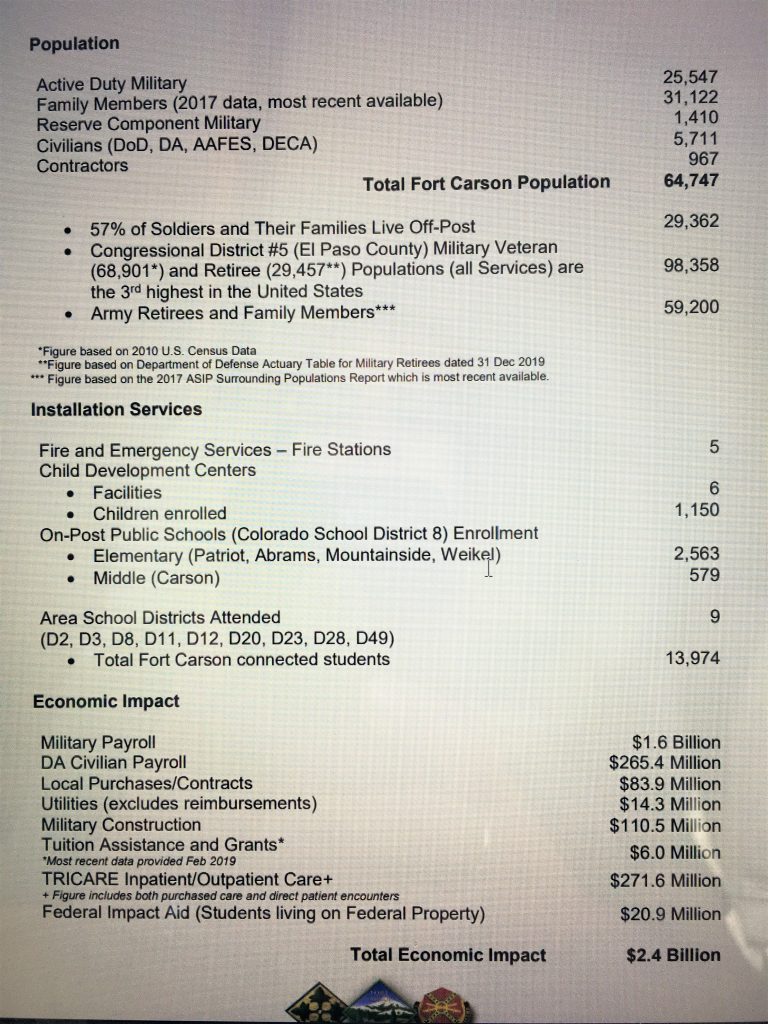
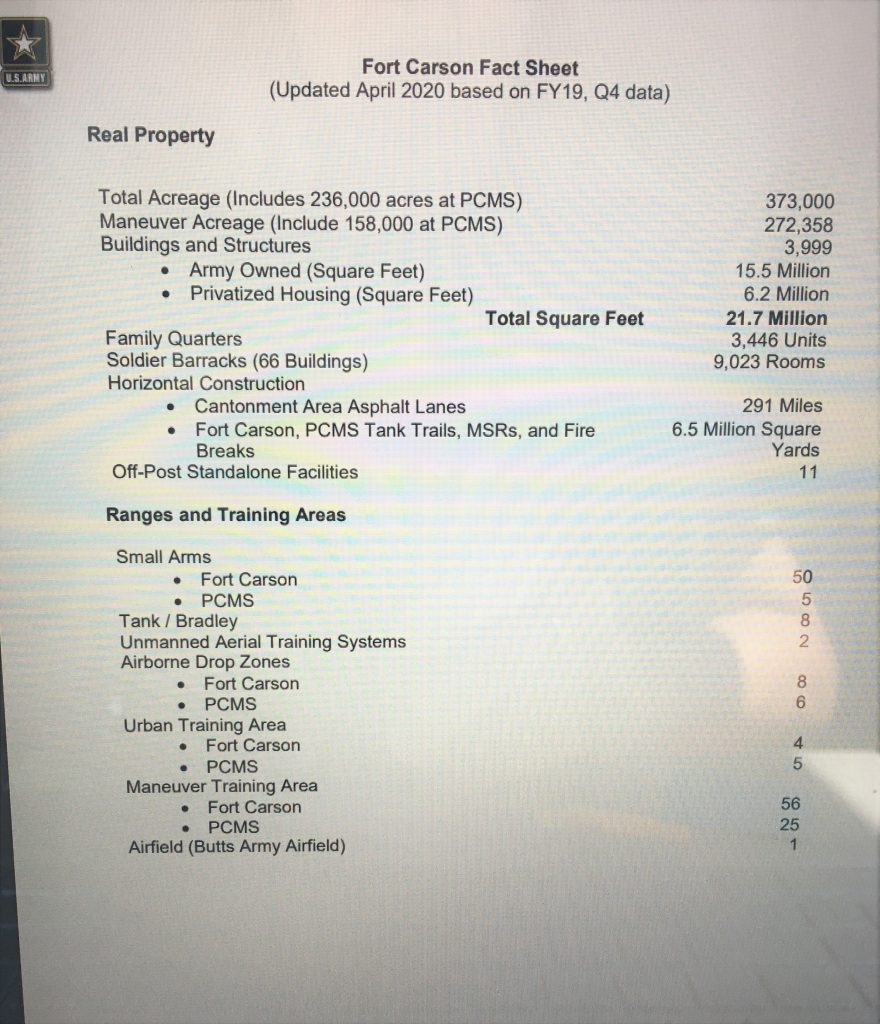
We also fired off an email to our coach manufacturer, Holiday Rambler. Our seats are wearing badly, and they shouldn’t be. We’ll see if they ever respond. They’re fantastic about responding immediately when you have a technical question and need their input, but when it comes to complaints it’s a whole different story. ☹

